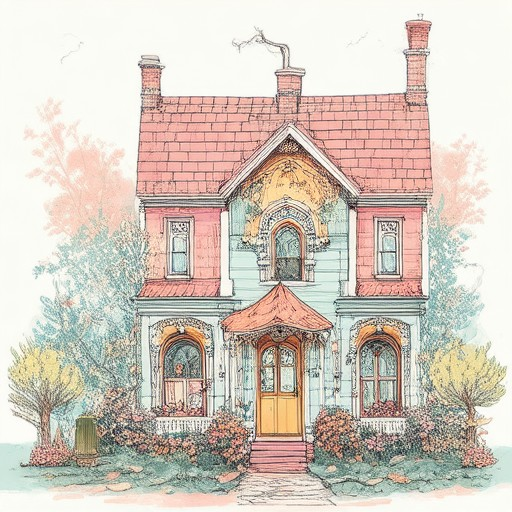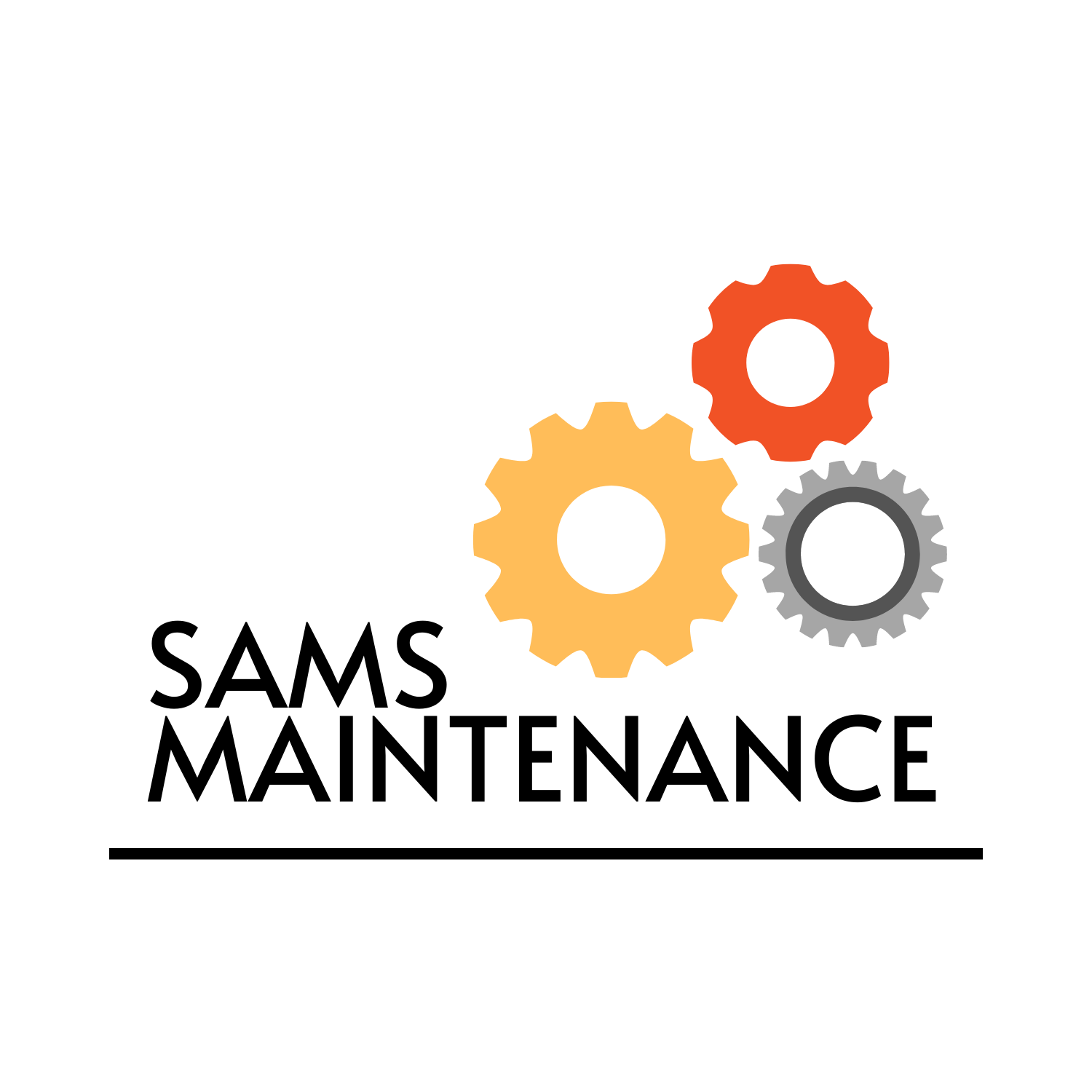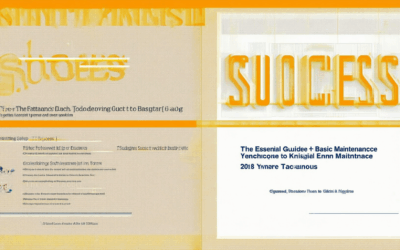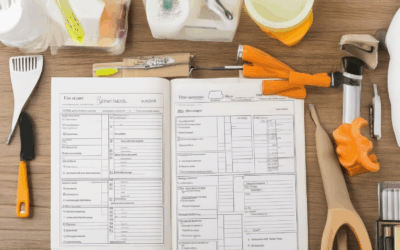Maintaining a home requires consistent effort and knowledge of the essential routines that ensure longevity and safety. While some tasks may seem daunting, understanding the basics of routine house repair can save time and money in the long run. Whether you’re a seasoned homeowner or new to the responsibilities, staying proactive with regular checks and repairs is crucial for preserving your investment. This guide delves into the key principles of house maintenance, offering actionable tips and insights to help you address common issues before they escalate. From understanding the rule of thumb for repairs to creating a personalized maintenance schedule, this comprehensive overview will walk you through what needs to be done and when. By prioritizing seasonal tasks and focusing on high-impact areas, you can ensure your home remains in excellent shape. Keep reading to discover how to identify costly issues early and learn budget-friendly strategies for major renovations. With the right approach, routine house repairs become manageable and even rewarding.

Rule of Thumb for House Repair
A well-maintained home requires consistent care to prevent costly repairs and extend its lifespan. Here’s a practical guide to help you manage house repairs effectively:
Budgeting for Repairs
Set aside 1-4% of your home’s value annually for maintenance. For example, a $200,000 home should budget $2,000-$8,000 yearly.
Common Repair Frequencies
- Appliances: 1-2 years for major repairs (e.g., refrigerators, dishwashers)
- Plumbing: Every 3-5 years for fixtures and pipes
- Electrical Systems: 5-10 years for updates and inspections
- Roofing: 20-30 years for replacement
Preventative Maintenance Tips
Regular checks can save money and prevent emergencies:
- Inspect chimneys and flues annually: Prevent blockages and fires
- Check gutters and downspouts: Ensure proper drainage to avoid water damage
- Test smoke detectors monthly: Ensure they’re working and replace batteries regularly
- Schedule HVAC tune-ups: Extend equipment life and improve efficiency
Emergency Repairs vs. DIY
Know when to handle repairs yourself and when to call professionals:
- Minor leaks and cracks: Can often be fixed with DIY kits
- Major structural issues: Require professional assessment to avoid further damage
- Electrical and plumbing problems: Best left to licensed experts
Staying Proactive
Invest time in learning basic repair skills or hiring reliable contractors. Regularly update your knowledge on best practices to stay ahead of potential issues.
By following these guidelines, you can manage house repairs efficiently and enjoy a safer, more comfortable living environment.
What Routine Maintenance Is Required for a House?
Keeping your house in great shape requires consistent routine maintenance. Here’s a breakdown of essential tasks to ensure your home stays safe, comfortable, and energy-efficient:
Exterior Maintenance
- Gutters and Downspouts: Clean out leaves and debris twice a year to prevent water buildup and foundation issues.
- Roof: Check for missing shingles or damaged tiles and repair as needed to avoid leaks.
- Exterior Walls: Look for peeling paint, cracks, or damage, and repaint or repair as necessary.
- Foundation: Inspect for cracks or settling, which may indicate underlying structural issues.
Heating, Ventilation, and Air Conditioning (HVAC)
- HVAC System: Change air filters monthly and schedule professional inspections twice a year to ensure optimal performance and energy efficiency.
- Ductwork: Check for leaks or blockages and clean if necessary to maintain airflow.
- Programmable Thermostat: Test and update settings to ensure energy savings and comfort.
Plumbing
- Plumbing Pipes: Look for leaks under sinks, around faucets, and near pipes leading to the septic tank.
- Drain Traps: Clean out hair and debris to prevent clogs.
- Water Heater: Inspect for leaks or rust and consider replacing an older model every 10-12 years.
Electrical Systems
- Outlets and Switches: Test functionality and check for tripping issues.
- Circuit Breakers: Ensure they trip correctly when necessary and reset them safely.
- Old Wiring: Replace outdated or frayed wires to prevent electrical fires.
Appliance Maintenance
- Refrigerator: Clean condenser coils and check door seals for a tight closure.
- Dishwasher: Clean the drain hose and check the door latch for proper closing.
- Major Appliances: Schedule annual inspections for ranges, microwaves, and laundry machines.
Fire Safety
- Smoke Detectors: Test monthly and replace batteries as needed.
- Carbon Monoxide Detectors: Ensure they’re functioning properly and located near sleeping areas.
- Fire Extinguishers: Test once a year and store them in an easily accessible location.
Landscape and Yard
- Garden Beds: Remove weeds and inspect for pests or disease.
- Tree and Shrubs: Trim branches that hang over roofs or walkways to prevent damage.
- Walkways and Driveways: Check for cracks or uneven surfaces and repair as needed.
Windows and Doors
- Window Tracks: Clean and lubricate to ensure smooth operation.
- Weatherstripping: Check for gaps or damage that may allow drafts or pests in.
- Door Hinges: Lubricate and tighten to prevent squeaking or loosening.
Water Systems
- Hot Water Heater: Flush annually to remove sediment buildup.
- Water Pipes: Check for leaks and corrosion, especially near the water meter and pressure tank.
- Pressure Relief Valve: Test and adjust according to manufacturer instructions.
By staying proactive with these maintenance tasks, you’ll extend your home’s lifespan and enjoy better comfort and safety. For detailed guides and tools to help with these tasks, visit SamsMaintenance.com .

Most Expensive Home Repairs
The most expensive things to fix in a house vary based on the scope of the issue, but several areas consistently stand out as costing more than others. Here’s a breakdown of the most costly repairs:
- Kitchen Renovation :
- Why It’s Costly : Upgrading or repairing a kitchen involves high-quality fixtures, cabinetry, and appliances. Labor costs for installing these items can significantly increase the price.
-
Example Costs : A complete kitchen remodel can range from $10,000 to $100,000+, depending on the size and quality of materials.
-
Bathroom Renovation :
- Why It’s Costly : Similar to kitchens, bathrooms require durable materials like tiles, fixtures, and sometimes plumbing upgrades.
-
Example Costs : A mid-range bathroom renovation typically costs between $5,000 and $15,000.
-
Major Appliance Replacement :
- Why It’s Costly : High-end appliances like refrigerators, dishwashers, and laundry machines come with premium prices.
-
Example Costs : Replacing a single appliance can cost upwards of $1,500 for a high-quality model.
-
HVAC System Installation/Repair :
- Why It’s Costly : Installing a new furnace, heat pump, or air conditioning unit requires specialized knowledge and materials.
-
Example Costs : A new HVAC system can cost between $4,000 and $12,000+ depending on the type and size.
-
Structural Repairs :
- Why It’s Costly : Issues like foundation cracks or rotten wood require extensive work and heavy machinery.
-
Example Costs : Fixing a damaged foundation can range from $3,000 to $20,000+.
-
Electrical System Rewiring :
- Why It’s Costly : Updating or rewiring an older home’s electrical system is labor-intensive and potentially dangerous.
-
Example Costs : Rewiring a small home can cost around $2,000 to $5,000.
-
Plumbing Repairs :
- Why It’s Costly : Under-the-counter plumbing upgrades or pipe replacements can be expensive.
-
Example Costs : A full plumbing system overhaul may cost between $8,000 and $25,000+.
-
Roof Repair or Replacement :
- Why It’s Costly : Replacing a roof involves removing the old one and installing a new one, often with high-grade materials.
-
Example Costs : A asphalt shingle roof replacement can cost between $5,000 and $15,000.
-
Landscaping or Pool/Deck Repairs :
- Why It’s Costly : Large-scale landscaping projects or pool deck repairs can be expensive due to materials and labor.
-
Example Costs : Building a new pool can range from $30,000 to $100,000+.
-
Exterior Siding and Window Replacement :
- Why It’s Costly : High-quality siding and energy-efficient windows can add significant costs.
- Example Costs : Replacing vinyl siding on a medium-sized home can cost around $8,000 to $15,000.
These repairs are often among the most expensive because they involve specialized skills, high-quality materials, and potential safety considerations. Planning ahead and budgeting carefully is essential for addressing these issues in a home.

What Should I Repair First in an Old House?
When tackling repairs in an old house, it’s crucial to address the most critical areas first to prevent minor issues from escalating into major problems. Here’s a prioritized plan:
-
Roof Inspection and Repairs : Begin with the roof to check for leaks or missing shingles. Water damage can weaken structural integrity, so addressing this early is vital.
-
Foundation Assessment : Examine the foundation for cracks or instability caused by soil conditions. Professional inspection is recommended due to potential complexity.
-
Plumbing and Electrical Systems : Inspect pipes for rust or leaks and update outdated electrical systems to ensure safety and efficiency.
-
Window Replacement : Replace old, inefficient windows to enhance energy efficiency and reduce moisture infiltration.
-
Exterior Paint and Siding : Refresh the exterior to protect against weather damage and improve curb appeal.
-
Kitchen and Bathroom Renovation : Modernize these high-traffic areas with updated appliances and fixtures for improved functionality and safety.
-
Flooring Replacement : Address warped or sagging floors to stabilize the structure and prevent further damage.
-
Professional Inspection : Conduct a thorough inspection to identify hidden issues like mold or pests, ensuring long-term stability.
-
Chimney and Gutter Check : Inspect the chimney for cracks and clean gutters to prevent water damage.
By following this sequence, you ensure that your old house remains safe, functional, and comfortable for years to come.
Correct Order of Renovation Steps
The proper sequence of renovation steps ensures efficiency, safety, and effectiveness. Here’s a step-by-step guide:
- 1. Planning and Budgeting
- 2. Obtain Necessary Permits
- 3. Demolition
- 4. Framing and Structural Work
- 5. Electrical and Plumbing Systems
- 6. Exterior Finishes
- 7. Interior Finishes
- 8. Final Touches
– Outline your goals, priorities, and timeline. – Create a detailed budget, considering materials, labor, and unexpected costs. – Research design ideas and gather inspiration from reputable sources like Architectural Digest or Home Renovation .
– Apply for building permits required by local regulations. – Consult with local authorities to ensure compliance with zoning laws and codes.
– Remove outdated or damaged components safely. – Disassemble fixtures, cabinetry, and other items carefully.
– Install new framing materials to support the new structure. – Reinforce walls and foundations as needed.
– Update or install new wiring, switches, and outlets. – Replace or repair pipes and fixtures to ensure proper water supply and drainage.
– Replace or repaint siding, windows, and doors. Tip: Consider energy-efficient options for improved insulation and lower utility bills.
– Install new flooring, walls, and ceilings. – Add lighting fixtures and decorative elements to enhance the space.
– Complete landscaping and outdoor enhancements. – Conduct a final inspection to ensure everything meets code standards.

How to Determine If a House Is Worth Fixing Up
To decide whether a house is worth fixing up, consider the following factors:
1. Location
- Neighborhood Condition: Assess the overall condition of the surrounding properties. Well-maintained neighborhoods often indicate appreciation potential.
- Proximity to Amenities: Check the distance to schools, grocery stores, parks, and other conveniences. Proximity can significantly impact property value.
- Area Trends: Research local real estate trends to understand if the market is appreciating or depreciating in the area.
2. Property Condition
- Structural Integrity: Inspect the roof, windows, and exterior walls for signs of wear or damage. A strong foundation is critical to prevent future issues.
- Aging Factors: Consider the house’s age. Older homes may offer charm but often require more maintenance and updates.
3. Interior and Functional Layout
- Interior Condition: Examine floors, walls, and fixtures for signs of damage or decay. High-maintenance areas like kitchens and bathrooms are key considerations.
- Layout Flexibility: Evaluate the home’s floorplan for its potential to adapt to modern living needs, such as open spaces or multi-functional rooms.
4. Market Comparison
- Comparable Properties: Compare the house’s value to similar properties in the area. Look for houses that have recently sold to gauge fair market pricing.
- Pricing Strategy: Determine if the house is priced below market value, indicating potential profit margins after renovations.
5. Hidden Costs and Future Considerations
- Unknown Issues: Budget for potential hidden problems like structural damage or environmental factors (e.g., flood risks).
- Long-Term Goals: Decide if you plan to live in the house long-term or flip it for profit, as this affects your approach to renovations and expected returns.
6. Personal Preferences and Budget
- Renovation Comfort Level: Assess your willingness and ability to manage a renovation project, including time, skills, and budget constraints.
- Budget Realism: Create a realistic renovation budget based on the scope of needed work and the house’s potential value post-renovations.
Conclusion
Ultimately, the decision to fix up a house depends on a combination of personal preferences, financial capacity, and market conditions. Consulting with a real estate professional or home inspection service can provide valuable insights to guide your decision-making process.




0 Comments